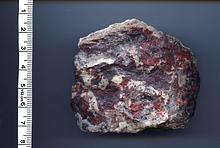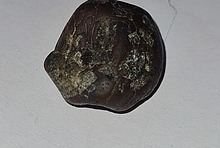Home PageAbout MindatThe Mindat ManualHistory of MindatCopyright StatusWho We AreContact UsAdvertise on Mindat
Donate to MindatCorporate SponsorshipSponsor a PageSponsored PagesMindat AdvertisersAdvertise on Mindat
Learning CenterWhat is a mineral?The most common minerals on earthInformation for EducatorsMindat ArticlesThe ElementsThe Rock H. Currier Digital LibraryGeologic Time
Minerals by PropertiesMinerals by ChemistryAdvanced Locality SearchRandom MineralRandom LocalitySearch by minIDLocalities Near MeSearch ArticlesSearch GlossaryMore Search Options
The Mindat ManualAdd a New PhotoRate PhotosLocality Edit ReportCoordinate Completion ReportAdd Glossary Item
Mining CompaniesStatisticsUsersMineral MuseumsClubs & OrganizationsMineral Shows & EventsThe Mindat DirectoryDevice SettingsThe Mineral Quiz
Photo SearchPhoto GalleriesSearch by ColorNew Photos TodayNew Photos YesterdayMembers' Photo GalleriesPast Photo of the Day GalleryPhotography
╳Discussions
💬 Home🔎 Search📅 LatestGroups
EducationOpen discussion area.Fakes & FraudsOpen discussion area.Field CollectingOpen discussion area.FossilsOpen discussion area.Gems and GemologyOpen discussion area.GeneralOpen discussion area.How to ContributeOpen discussion area.Identity HelpOpen discussion area.Improving Mindat.orgOpen discussion area.LocalitiesOpen discussion area.Lost and Stolen SpecimensOpen discussion area.MarketplaceOpen discussion area.MeteoritesOpen discussion area.Mindat ProductsOpen discussion area.Mineral ExchangesOpen discussion area.Mineral PhotographyOpen discussion area.Mineral ShowsOpen discussion area.Mineralogical ClassificationOpen discussion area.Mineralogy CourseOpen discussion area.MineralsOpen discussion area.Minerals and MuseumsOpen discussion area.PhotosOpen discussion area.Techniques for CollectorsOpen discussion area.The Rock H. Currier Digital LibraryOpen discussion area.UV MineralsOpen discussion area.Recent Images in Discussions
Mineralogical ClassificationCrystal structures of synthetic sekaninaite and ferroindialite
29th Jul 2014 13:40 UTCUwe Kolitsch Manager
The crystal structures of synthetic hexagonal and orthorhombic Fe-cordierite polymorphs with the space groups P6/mcc and Cccm were refined from single-crystal X-ray diffraction data to R 1, hex = 3.14 % and R 1, ortho = 4.48 %. The substitution of the larger Fe2+ for Mg leads to multiple structural changes and an increase of the unit cell volumes, with a, c (hex) = 9.8801(16) Å, 9.2852(5) Å and a, b, c (ortho) = 17.2306(2) Å, 9.8239(1) Å, 9.2892(1) Å in the end-members. Furthermore Fe incorporation results in an increase of the volumes of the octahedra, although the diameters of the octahedra in direction of the c-axis decrease in both polymorphs. X-ray powder diffraction analysis indicates a high degree of Al/Si ordering in the orthorhombic polymorph, the Miyashiro distortion index is ~0.24. Estimations of site occupancies based on the determined tetrahedral volumes result in the following values for hexagonal Fe-cordierite: ~73 % Al for T1 and ~28 % Al for T2. For the first time Raman spectroscopy was performed on the hexagonal Fe-cordierite polymorph. In the hexagonal Fe-cordierite polymorph most Raman peaks are shifted towards lower wavenumbers when compared with the Mg-end-member.

29th Aug 2014 16:16 UTCKnut Edvard Larsen 🌟 Manager
Chukanov, N.V., Aksenov, S.M., Pekov, I.V., Ternes, В., Schüller, W., Belakovskiy, D.I., Van, K.V., Blass, G. (2014): Ferroindialite (Fe2+,Mg)2Al4Si5O18, a new beryl-group mineral from the Eifel volcanic region, Germany. Zapiski RMO, 143, 46-56.
See abstract here: http://www.minsoc.ru/FilesBase/2143103e.pdf
Data added to mineralpage




Mindat.org is an outreach project of the Hudson Institute of Mineralogy, a 501(c)(3) not-for-profit organization.
Copyright © mindat.org and the Hudson Institute of Mineralogy 1993-2024, except where stated. Most political location boundaries are © OpenStreetMap contributors. Mindat.org relies on the contributions of thousands of members and supporters. Founded in 2000 by Jolyon Ralph.
Privacy Policy - Terms & Conditions - Contact Us / DMCA issues - Report a bug/vulnerability Current server date and time: April 18, 2024 14:36:40
Copyright © mindat.org and the Hudson Institute of Mineralogy 1993-2024, except where stated. Most political location boundaries are © OpenStreetMap contributors. Mindat.org relies on the contributions of thousands of members and supporters. Founded in 2000 by Jolyon Ralph.
Privacy Policy - Terms & Conditions - Contact Us / DMCA issues - Report a bug/vulnerability Current server date and time: April 18, 2024 14:36:40











